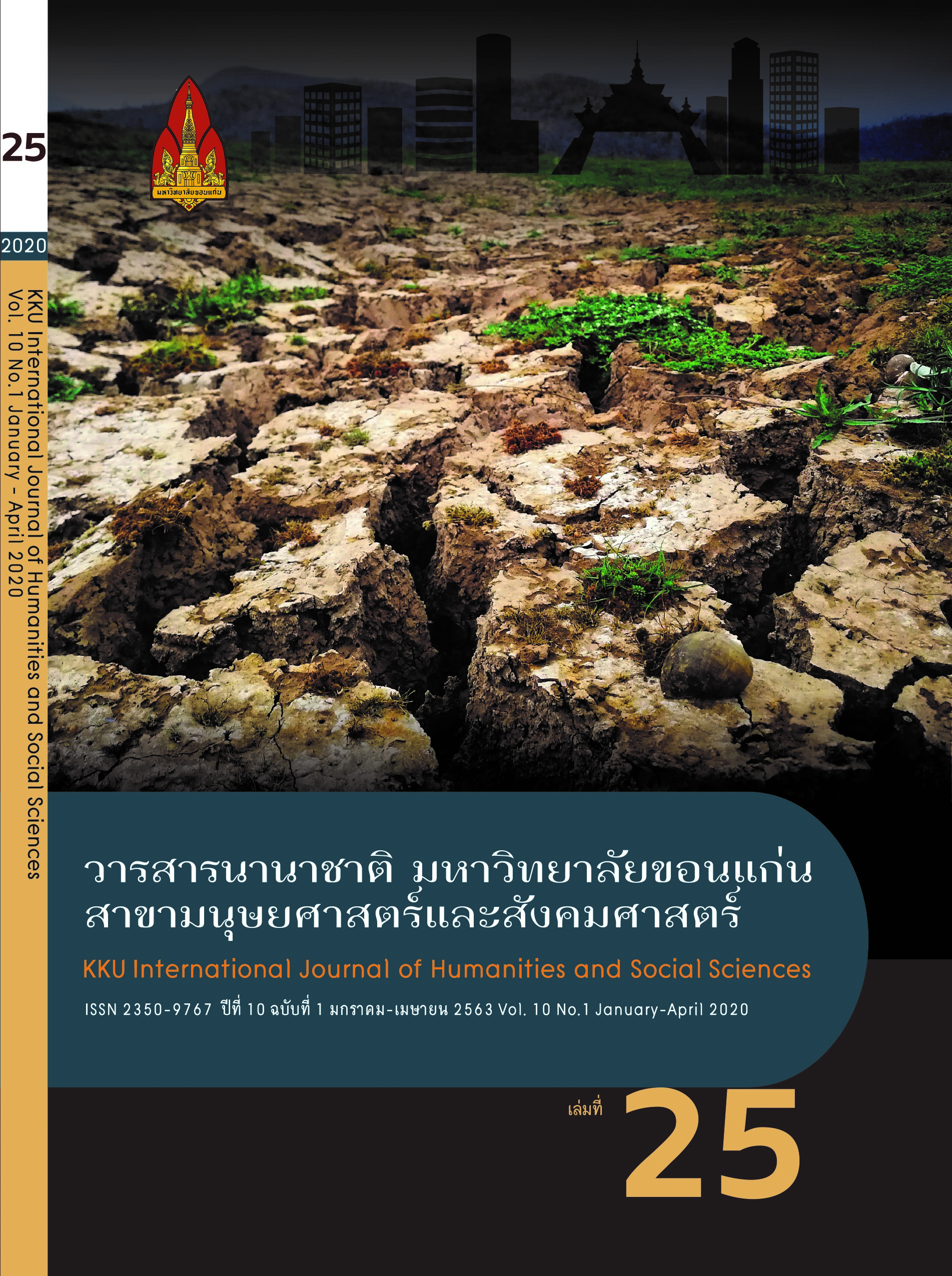The management practices in managing a community Enterprise Group in Nong Bua Lam Phu province
Main Article Content
Abstract
ABSTRACT
This is qualitative research. The objectives were to study the management practices in managing a community enterprise group in Nong Bua Lam Phu province. There were eighteen informants including nine board members of the Huay Bong fish product community enterprise group (The One), six group members, two villagers and one official from the Electricity Generating Authority of Thailand. Research tools were interview guideline for in-depth interview, observational guideline and group discussion. The Descriptive Analysis method was used to analyze data.
Findings:
The Huay Bong Fish Product Community Enterprise Group (The One) was founded by the Electricity Generating Authority of Thailand (Ubolratana Dam). The group is administrated by a board. S organizations support the group and certify its products’ standards. The group neither planned its production process nor had any business plan. Instead, the group held a bimonthly meeting to discuss its production plan. There are fifteen group members, mainly laborers in the production process. The group hired additional labor including seniors and children in the community to help preparing materials during periods of high demand. The group used multiple machines in the production process. The group produced several products from fish. The group set prices for each product based on the per kilogram fixed costs of each product. Products are distributed through different channels. The group used word of mouth and distributed business cards. The group’s revolving fund derives from group members’ shares, profits, and grants and/or loans from outside organizations. The group used very simplified bookkeeping.
Article Details
References
One Product: OTOP. สืบค้นเมื่อ 5 กรกฎาคม 2559, จาก http://www.cdd.go.th/web/suphanburi/cdd_news1detail.php?news_id=64&cat_id=5
. สรุปยอดจำหน่ายสินค้าหนึ่งตำบลหนึ่งผลิตภัณฑ์
(OTOP). สืบค้นเมื่อ 10 กรกฎาคม 2559,
จาก http://203.114.112.233/CDDCENTER/?menu=rpt&ac=2
ไทยตำบลดอทคอม. (ม.ป.ป.). ข้อมูลโอทอป. สืบค้นเมื่อ 1 กรกฎาคม 2559.
จาก http://www.thaitambon.com/
ธเนศ ศรีวิชัยลำพันธ์. (2556). การพัฒนาเศรษฐกิจชุมชน Community Economic Development.
เชียงใหม่: มหาวิทยาลัยเชียงใหม่.
นภาภรณ์ สมอาสา และวรรณภา นิวาสะวัต. (2554). ความสำเร็จของการพัฒนาศักยภาพกลุ่มปลาส้ม.
วารสารบริหารท้องถิ่น วิทยาลัยการปกครองท้องถิ่น มหาวิทยาลัยขอนแก่น. 4(3), 40-51.
มงคล ด่านธานินทร์. (ม.ป.ป.). ชุมชนจะยืนอยู่ได้อย่างไรท่ามกลางเศรษฐกิจ 2 ระบบ.
สืบค้นเมื่อ 1 กรกฎาคม 2559, จาก https://www.gotoknow.org/posts/244159
มหาวิทยาลัยสุโขทัยธรรมาธิราช. (ม.ป.ป.). เศรษฐกิจชุมชน ความหมาย. สืบค้นเมื่อ 5 กรกฎาคม 2559,
จาก http://www.stou.ac.th/stouonline/lom/data/sec/Alternative/01-01-01.html
วิภาวี กฤษณะภูติ. (2559). การจัดการวิสาหกิจชุมชน Management of Community Enterprise.
ขอนแก่น: มหาวิทยาลัยขอนแก่น
สาโรช เนติธรรมกุล. (2554). ผลกระทบของวิสาหกิจชุมชนต่อการเปลี่ยนแปลงทางสังคมในภาคใต้
ตอนบนของประเทศไทย. วิทยานิพนธ์ปรัชญาดุษฎีบัณฑิต สาขาสังคมวิทยา บัณฑิตวิทยาลัย
มหาวิทยาลัยรามคำแหง.
สุภางค์ จันทวานิช. (2552). การวิเคราะห์ข้อมูลในการวิจัยเชิงคุณภาพ (พิมพ์ครั้งที่ 9).
กรุงเทพมหานคร : สำนักพิมพ์แห่งจุฬาลงกรณ์มหาวิทยาลัย.
. (2554). วิธีการวิจัยเชิงคุณภาพ. (พิมพ์ครั้งที่ 19). กรุงเทพมหานคร : สำนักพิมพ์
แห่งจุฬาลงกรณ์มหาวิทยาลัย.
สำนักงานจังหวัดหนองบัวลำภู. (2555). รายงานการประชุมกรมการจังหวัด หัวหน้าส่วนราชการ
หน่วยงานของรัฐ อำเภอ องค์กรปกครองส่วนท้องถิ่น และองค์กรภาคเอกชน
จังหวัดหนองบัวลำภู ครั้งที่ 4/2555. หนองบัวลำภู: สำนักงานจังหวัด.
อรุณี อ่อนสวัสดิ์. (2551). ระเบียบวิธีวิจัย (พิมพ์ครั้งที่ 3). ภาควิชาการศึกษา คณะศึกษาศาสตร์
มหาวิทยาลัยนเรศวร.
อารี วิบูลย์พงศ์. (2555). ความรู้จากงานวิจัยวิสาหกิจชุมชน. วารสารวิจัยเพื่อการพัฒนาเชิงพื้นที่.
4(6), 112-133.


